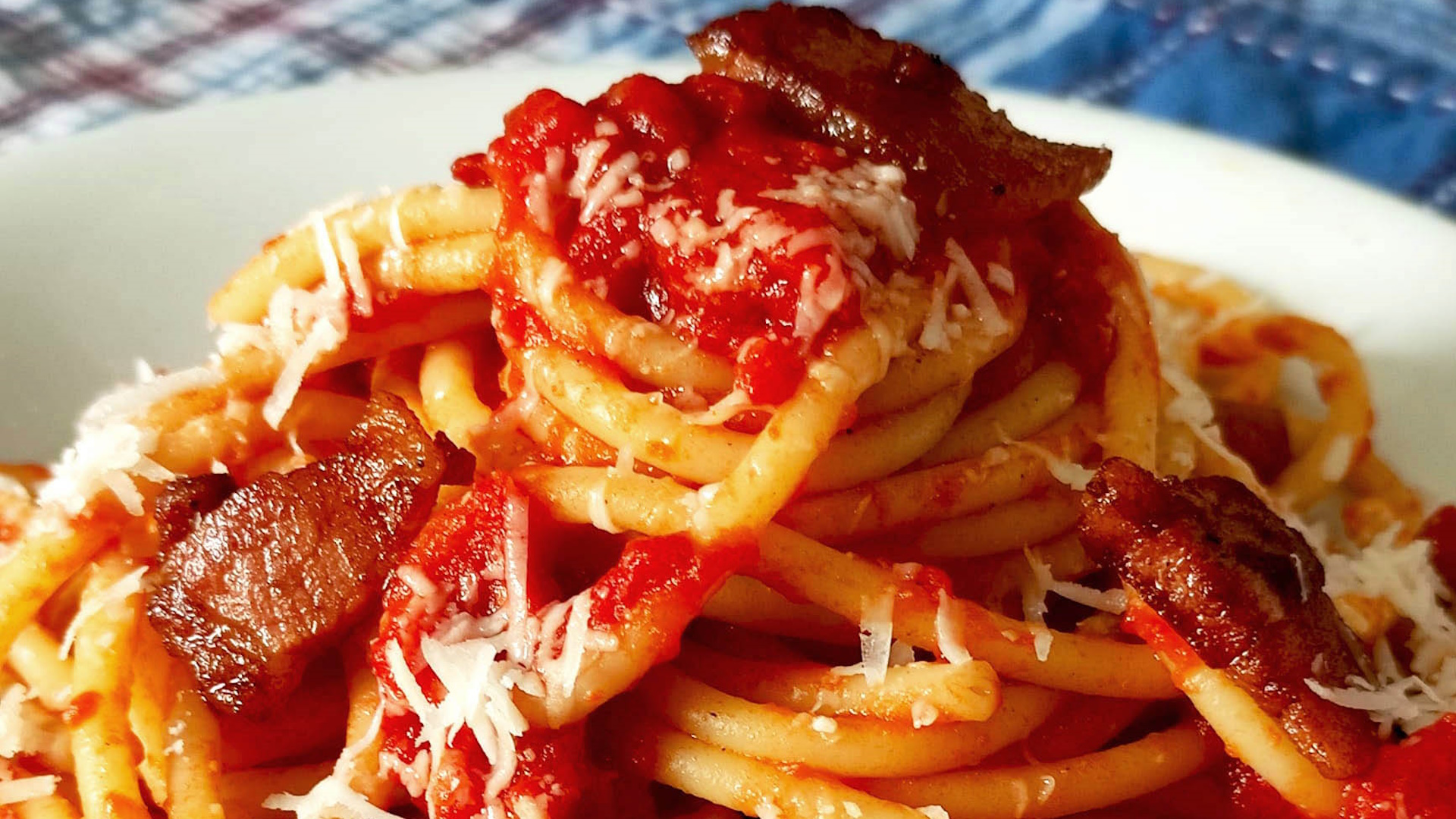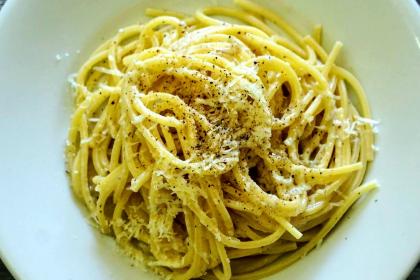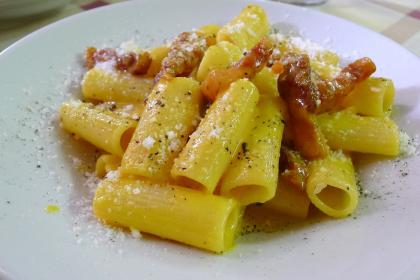
A few simple, first-rate ingredients are enough to give life to one of the most extraordinary and iconic dishes of Rome's culinary tradition, loved and imitated all over the world, often with dubious results.
Amatriciana is closely linked to the unmistakable flavours of the 'primi' (first courses) of the Roman cuisine, which brings to the table masterpieces of taste such as the succulent Carbonara, the Cacio e Pepe and the Gricia, strictly white, its tasty ancestor.
Before tasting this delicious dish, we must, therefore, tell something about the ancient origins of the Gricia, whose recipe originated in a small mountain village nestled between Lazio and Abruzzo and the custom of the local shepherds to bring along the ingredients to create a unique and mouth-watering meal.
Perhaps you do not know, however, that it is precisely from the Gricia that Amatriciana originated, having been developed after tomatoes arrived in Italy in the 16th century.
It seems that the addition of tomato to an already unsurpassed recipe was due to the brilliant intuition of Francesco Leonardi, a Roman cook who testifies to its use in his cookbook L'Apicio Moderno, ossia l'arte di apprestare ogni sorta di vivande (Modern Apicius, or the art of preparing all kinds of food) of 1790.
It was only in the 19th century that a new trend took hold: after the addition of tomatoes, the Amatriciana was perfected with the introduction of a different pasta shape, the bucatini - large, perforated spaghetti designed to better retain the sauce. It definitively conquered the palates of the Romans, thanks also to the arrival in Rome of the 'matriciani' hosts and innkeepers who were specialised in its preparation.
The perfect balance of ingredients, the heady fragrance of guanciale bacon browning in the pan, a few, skilful preparations and you're done: are you ready for a memorable gastronomic experience?
If, however, you want to try your hand at preparing it, here is the recipe to follow for a perfect Amatriciana.
Ingredients
Bucatini in the desired quantity, or as we say in Rome, 'a sentimento', meaning as much as you like.
Guanciale (pork cheek)
Peeled tomatoes
Grated Pecorino Romano cheese
Fresh or dried chilli pepper
Olive oil
Salt
Procedure
- Cut the guanciale into long strips and roast it in a frying pan with a drizzle of oil and the chilli pepper, taking care not to brown it too much for a successful preparation.
- Add the peeled tomatoes and cook over high heat for about 15 minutes.
- Add the previously drained guanciale to the sauce, mixing them together.
- Meanwhile, cook the bucatini in plenty of salted water.
- Drain them while still al dente and stir them into a large pan together with the tomato sauce and the guanciale.
- Portion and season your preparation with grated Pecorino Romano cheese.
- Serve your delectable Bucatini all'Amatriciana still steaming hot.
Enjoy!
Browse our Food & Wine section and discover the Roman culinary tradition!
Photo: Redazione Web Turismo Roma
The Gricia

Spaghetti with cacio cheese and pepper

Una ricetta semplice ma carica di storia
The tradititional Carbonara

One of the most popular dishes of traditional Roman cuisine











































